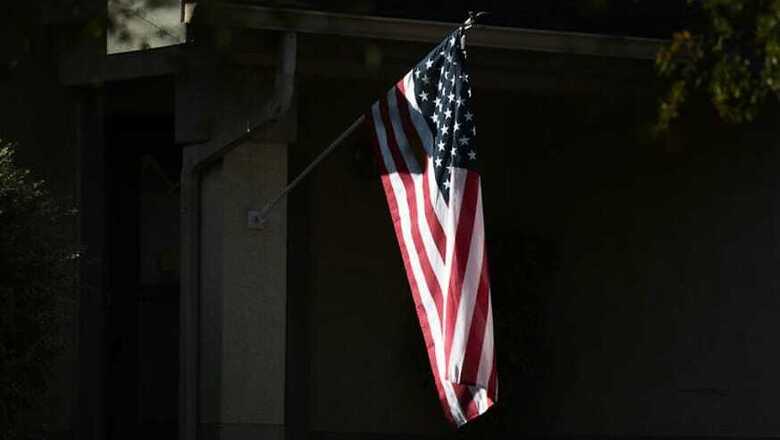
views
Washington India and America have reaffirmed their commitment to work together in support of a free, open and inclusive Indo-Pacific region and the two sides agreed to deepen their cooperation to address regional and global threats and to combat terrorism, according to the US State Department.
The resource-rich Indo-Pacific region is where China has been trying to spread its influence. The US has been pushing for a broader role by India in the strategically important region.
India, the US and several other world powers have been talking about the need to ensure a free, open and thriving Indo-Pacific in the backdrop of China's rising military maneuvering in the region.
In November last, India, the US, Australia and Japan gave shape to the long-pending Quadrilateral coalition to develop a new strategy to keep the critical sea routes in the Indo-Pacific free of Chinese influence.
US Secretary of State Mike Pompeo along with Defense Secretary Mark Esper hosted their Indian counterparts External Affairs Minister S Jaishankar and Defence Minister Rajnath Singh for the US 2+2 dialogue between the two countries at the Foggy Bottom headquarters of the State Department here.
"The two sides reaffirmed the growing strategic partnership between the United States and India, which is grounded in democratic values, shared strategic objectives, strong people-to-people ties, and a common commitment to the prosperity of their citizens," the US State Department said in a statement after the conclusion of the 2+2 ministerial.
"During the meeting, Secretary Pompeo and his counterparts reaffirmed their commitment to work together in support of a free, open, and inclusive Indo-Pacific region," the State Department said.
China is engaged in hotly contested territorial disputes in the South China Sea, and with Japan in the East China Sea. Both the areas are said to be rich in minerals, oil and other natural resources.
Beijing claims almost all of the South China Sea. Vietnam, the Philippines, Malaysia, Brunei and Taiwan have overlapping claims in the waterway, which includes vital sea lanes through which about USD 3 trillion in global trade passes each year.
According to the State Department, India and the US also agreed to deepen cooperation to address regional and global threats, combat terrorism, coordinate on disaster relief, train peacekeepers, promote transparent and sustainable infrastructure, and advance maritime security.
Both delegations also welcomed new initiatives to further strengthen people-to-people ties, including new exchange programs for parliamentarians and young innovators, increased judicial cooperation, the expansion of university research partnerships, and a new bilateral science and technology agreement, it said.
Looking to the future, the two sides pledged new cooperative efforts in the areas of water management, oceans, and space, according to the State Department.
"The Secretary and his counterparts also discussed ways to expand their 21st century defense partnership," the State Department said.
They welcomed the unprecedented levels of cooperation between the US and Indian militaries, made possible through enhanced exercises such as the first-ever tri-service Tiger Triumph exercise, greater information sharing, expanded defense trade, placement of liaison officers, and defense enabling agreements, including a recently concluded agreement to promote defense collaboration between our private sectors, it said.
"The close US-India defense partnership was on full display during Minister Singh's visit to Norfolk, VA, on December 17, during which he participated in an aircraft carrier tour and fighter aircraft demonstration at Naval Station Norfolk and Naval Air Station Oceana," it said.
Ministers Singh and Jaishankar extended an invitation to the US side to host the next 2+2 Ministerial Dialogue in India, the State Department said. Both sides looked forward to the next meeting and agreed to continue close cooperation on the range of activities and initiatives already underway, it added.
Meanwhile, a senior State Department official told reporters after conclusion of the 2+2 ministerial that people to people relationship was the bed rock of the bilateral ties between the two largest democracies of the world.
"On the people-to-people side, this traditionally is really a bedrock of the US-India relationship," the official said.
"We see those bonds on a daily basis across the United States. We have 200,000 Indian students currently studying in the United States, a record high. They contribute about USD 7 billion to the US economy," the official said.
Indian-Americans make invaluable contributions to the US, both in uniform and in elected office, the official said.
The 2+2 resulted in two new exchange programs: a parliamentary exchange program where India Caucus, the House Foreign Affairs Committee, will have reciprocal visits with Indian parliamentarians.
They also announced a US-India Young Innovators Initiative, which will support internship opportunities for emerging young leaders in key areas of scientific and economic endeavour, said the official wishing anonymity.
These people-to-people ties extend not just between the two countries but they're also global. The US and India concluded a new science and technology agreement that will strengthen collaboration on particle research, the official said.
"We're also working to increase cooperation on space situational awareness," the official said.




















Comments
0 comment